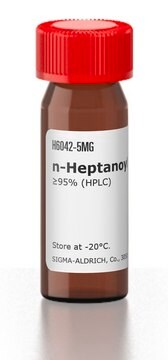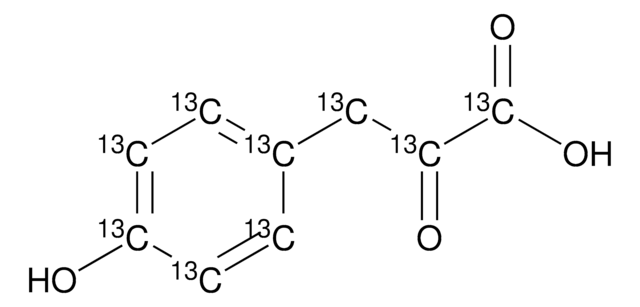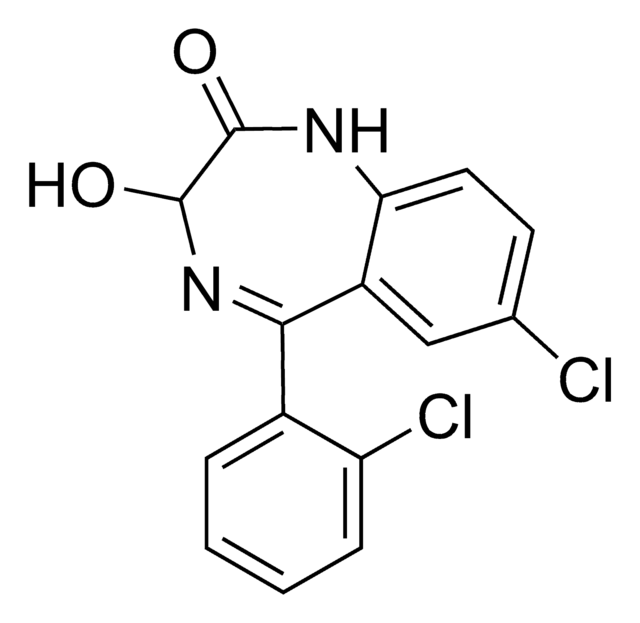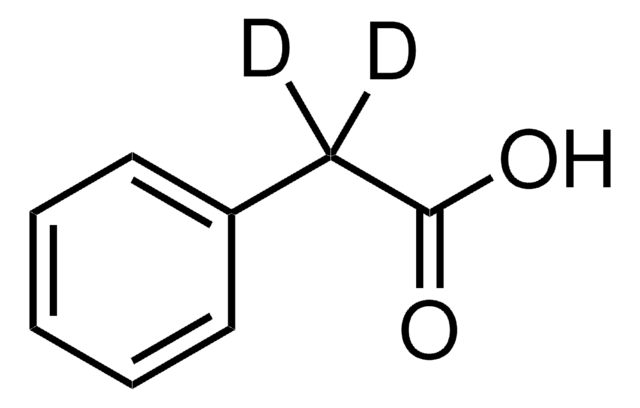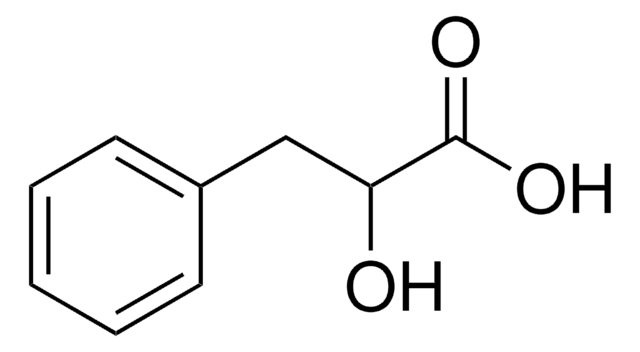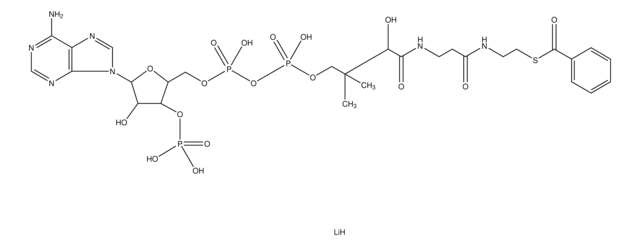P2153
Phenylacetyl coenzyme A lithium salt
~95%
About This Item
Productos recomendados
Ensayo
~95%
Formulario
powder
temp. de almacenamiento
−20°C
cadena SMILES
[Li].CC(C)(COP(O)(=O)OP(O)(=O)OCC1OC(C(O)C1OP(O)(O)=O)n2cnc3c(N)ncnc23)C(O)C(=O)NCCC(=O)NCCSC(=O)Cc4ccccc4
InChI
1S/C29H42N7O17P3S.Li.H/c1-29(2,24(40)27(41)32-9-8-19(37)31-10-11-57-20(38)12-17-6-4-3-5-7-17)14-50-56(47,48)53-55(45,46)49-13-18-23(52-54(42,43)44)22(39)28(51-18)36-16-35-21-25(30)33-15-34-26(21)36;;/h3-7,15-16,18,22-24,28,39-40H,8-14H2,1-2H3,(H,31,37)(H,32,41)(H,45,46)(H,47,48)(H2,30,33,34)(H2,42,43,44);;
Clave InChI
BYSZOQQABOXIQX-UHFFFAOYSA-N
Aplicación
Código de clase de almacenamiento
11 - Combustible Solids
Clase de riesgo para el agua (WGK)
WGK 3
Punto de inflamabilidad (°F)
Not applicable
Punto de inflamabilidad (°C)
Not applicable
Equipo de protección personal
Eyeshields, Gloves, type N95 (US)
Elija entre una de las versiones más recientes:
Certificados de análisis (COA)
¿No ve la versión correcta?
Si necesita una versión concreta, puede buscar un certificado específico por el número de lote.
¿Ya tiene este producto?
Encuentre la documentación para los productos que ha comprado recientemente en la Biblioteca de documentos.
Nuestro equipo de científicos tiene experiencia en todas las áreas de investigación: Ciencias de la vida, Ciencia de los materiales, Síntesis química, Cromatografía, Analítica y muchas otras.
Póngase en contacto con el Servicio técnico

